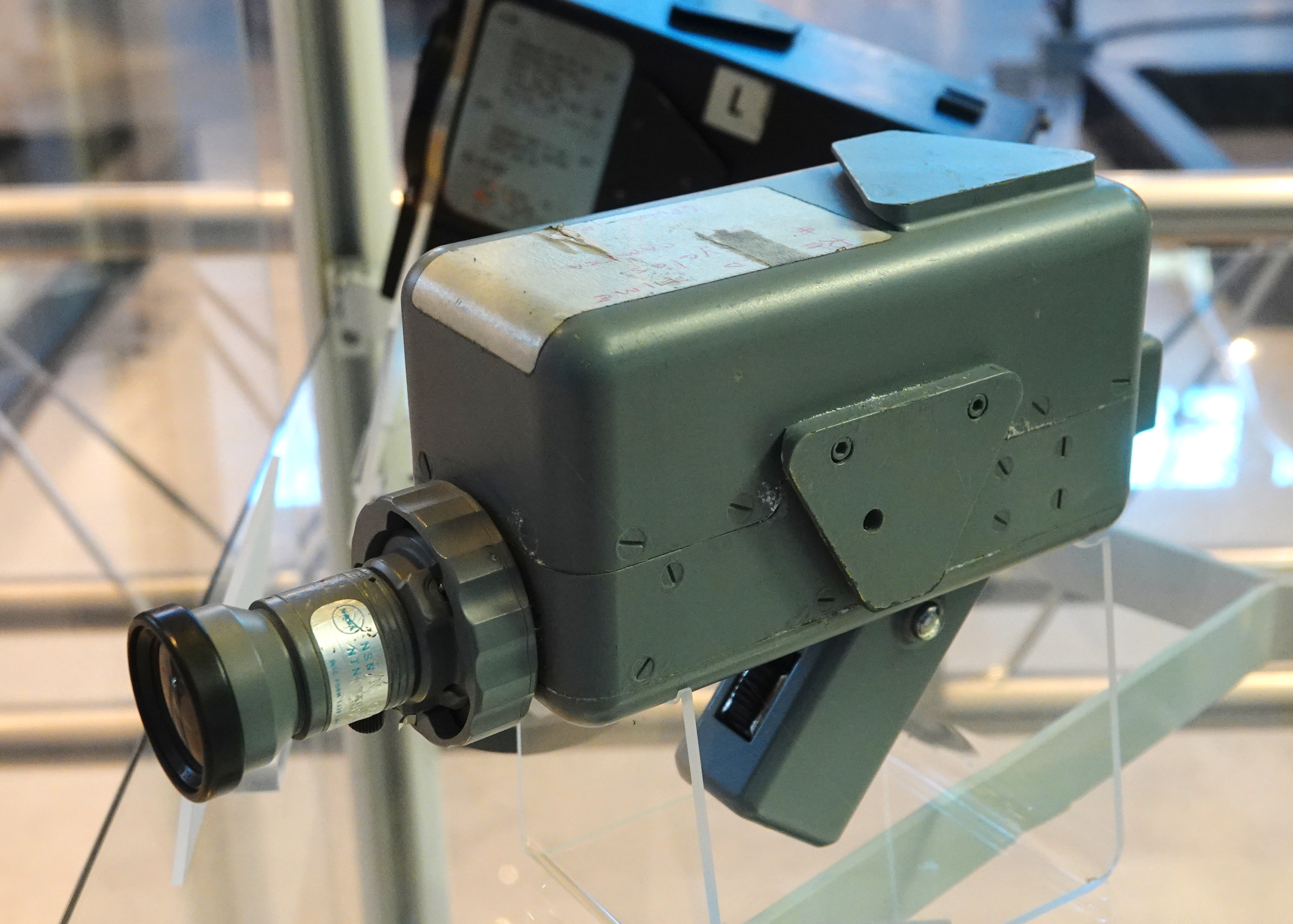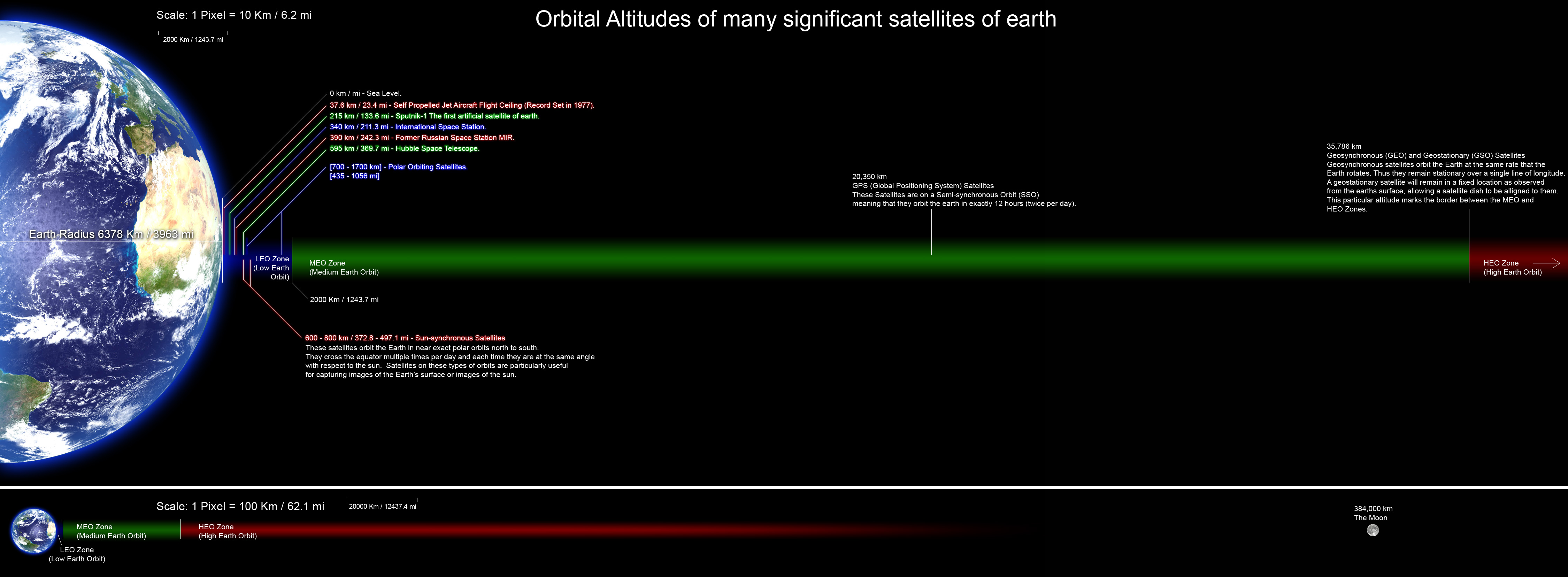|
Apollo 8
Apollo 8 (December 21–27, 1968) was the first crewed spacecraft to leave low Earth orbit and the first human spaceflight to reach the Moon. The crew orbited the Moon ten times without landing, and then departed safely back to Earth. These three astronauts— Frank Borman, James Lovell, and William Anders—were the first humans to personally witness and photograph the far side of the Moon and an Earthrise. Apollo 8 launched on December 21, 1968, and was the second crewed spaceflight mission flown in the United States Apollo space program after Apollo7, which stayed in Earth orbit. Apollo8 was the third flight and the first crewed launch of the Saturn V rocket, and was the first human spaceflight from the Kennedy Space Center, located adjacent to Cape Kennedy Air Force Station in Florida. Originally planned as the second crewed Apollo Lunar Module and command module test, to be flown in an elliptical medium Earth orbit in early 1969, the mission profile was chang ... [...More Info...] [...Related Items...] OR: [Wikipedia] [Google] [Baidu] |
NASA
The National Aeronautics and Space Administration (NASA ) is an independent agencies of the United States government, independent agency of the US federal government responsible for the civil List of government space agencies, space program, aeronautics research, and outer space, space research. NASA was National Aeronautics and Space Act, established in 1958, succeeding the National Advisory Committee for Aeronautics (NACA), to give the U.S. space development effort a distinctly civilian orientation, emphasizing peaceful applications in space science. NASA has since led most American space exploration, including Project Mercury, Project Gemini, the 1968-1972 Apollo program, Apollo Moon landing missions, the Skylab space station, and the Space Shuttle. NASA supports the International Space Station and oversees the development of the Orion (spacecraft), Orion spacecraft and the Space Launch System for the crewed lunar Artemis program, Commercial Crew Program, Commercial Crew ... [...More Info...] [...Related Items...] OR: [Wikipedia] [Google] [Baidu] |
Earthrise
''Earthrise'' is a photograph of Earth and some of the Moon's surface that was taken from lunar orbit by astronaut William Anders on December 24, 1968, during the Apollo 8 mission. Nature photographer Galen Rowell described it as "the most influential environmental photograph ever taken". Anders's color image had been preceded by a crude black-and-white 1966 raster image taken by the Lunar Orbiter 1 robotic probe, the first American spacecraft to orbit the Moon. Details ''Earthrise'' was taken by astronaut William Anders during the Apollo 8 mission, the first crewed voyage to orbit the Moon. Before Anders found a suitable 70 mm color film, mission commander Frank Borman took a black-and-white photograph of the scene, with the Earth's terminator touching the horizon. The land mass position and cloud patterns in this image are the same as those of the color photograph entitled ''Earthrise''. The photograph was taken from lunar orbit on December 24, 1968, 15:40 ... [...More Info...] [...Related Items...] OR: [Wikipedia] [Google] [Baidu] |
Spacecraft
A spacecraft is a vehicle or machine designed to fly in outer space. A type of artificial satellite, spacecraft are used for a variety of purposes, including communications, Earth observation, meteorology, navigation, space colonization, planetary exploration, and transportation of humans and cargo. All spacecraft except single-stage-to-orbit vehicles cannot get into space on their own, and require a launch vehicle (carrier rocket). On a sub-orbital spaceflight, a space vehicle enters space and then returns to the surface without having gained sufficient energy or velocity to make a full Earth orbit. For orbital spaceflights, spacecraft enter closed orbits around the Earth or around other celestial bodies. Spacecraft used for human spaceflight carry people on board as crew or passengers from start or on orbit (space stations) only, whereas those used for robotic space missions operate either autonomously or telerobotically. Robotic spacecraft used to support scientific re ... [...More Info...] [...Related Items...] OR: [Wikipedia] [Google] [Baidu] |
Apollo 8 Genesis Reading
On Christmas Eve, December 24, 1968, the crew of Apollo 8 read from the Book of Genesis as they orbited the Moon. Astronauts Bill Anders, Jim Lovell James Arthur Lovell Jr. (; born March 25, 1928) is an American retired astronaut, naval aviator, test pilot and mechanical engineer. In 1968, as command module pilot of Apollo 8, he became, with Frank Borman and William Anders, one of th ..., and Frank Borman, the first humans to travel to the Moon, recited verses 1 through 10 of the Genesis creation narrative from the King James Version, King James Bible. Anders read verses 1–4, Lovell verses 5–8, and Borman read verses 9 and 10. Drafting Borman felt that his initial attempts to draft something appropriate sounded too much like an apology for the United States involvement in the Vietnam War, and Joseph Laitin of the Bureau of the Budget (now the Office of Management and Budget) was brought in to assist. Laitin himself had the same problem; his initial drafts ce ... [...More Info...] [...Related Items...] OR: [Wikipedia] [Google] [Baidu] |
Apollo TV Camera
The Apollo program used several television cameras in its space missions in the late 1960s and 1970s; some of these Apollo TV cameras were also used on the later Skylab and Apollo–Soyuz Test Project missions. These cameras varied in design, with image quality improving significantly with each successive model. Two companies made these various camera systems: RCA and Westinghouse. Originally, these slow-scan television (SSTV) cameras, running at 10 frames per second (fps), produced only black-and-white pictures and first flew on the Apollo 7 mission in October 1968. A color camera – using a field-sequential color system – flew on the Apollo 10 mission in May 1969, and every mission after that. The color camera ran at the North American standard 30 fps. The cameras all used image pickup tubes that were initially fragile, as one was irreparably damaged during the live broadcast of the Apollo 12 mission's first moonwalk. Starting with the Apollo 15 mission, a more robust ... [...More Info...] [...Related Items...] OR: [Wikipedia] [Google] [Baidu] |
Jim McDivitt
Jim or JIM may refer to: * Jim (given name), a given name * Jim, a diminutive form of the given name James (given name), James * Jim, a short form of the given name Jimmy (given name), Jimmy * OPCW-UN Joint Investigative Mechanism * Jim (comics), ''Jim'' (comics), a series by Jim Woodring * Jim (album), ''Jim'' (album), by soul artist Jamie Lidell * Jim (Huckleberry Finn), Jim (''Huckleberry Finn''), a character in Mark Twain's novel * Jim (TV channel), in Finland * JIM (Flemish TV channel) * JIM suit, for atmospheric diving * Jim River, in North and South Dakota, United States * Jim, the nickname of Yelkanum Seclamatan (died April 1911), Native American chief * ''Journal of Internal Medicine'' * Juan Ignacio Martínez (born 1964), Spanish footballer, commonly known as JIM * Jim (horse), milk wagon horse used to produce serum containing diphtheria antitoxin * Jim (song), "Jim" (song), a 1941 song. * JIM, Jiangxi Isuzu Motors, a joint venture between Isuzu and Jiangling Motors Corpo ... [...More Info...] [...Related Items...] OR: [Wikipedia] [Google] [Baidu] |
Medium Earth Orbit
A medium Earth orbit (MEO) is an Earth-centered orbit with an altitude above a low Earth orbit (LEO) and below a high Earth orbit (HEO) – between above sea level.''Catalog of Earth Satellite Orbits'' NASA Earth Observatory. 4 September 2009. Accessed 2 May 2021. The boundary between MEO and LEO is an arbitrary altitude chosen by accepted convention, whereas the boundary between MEO and HEO is the particular altitude of a geosynchronous orbit, in which a satellite takes 24 hours to circle the Earth, the same period as the Earth’s own rotation. All satellites in MEO have an |
Apollo Lunar Module
The Apollo Lunar Module (LM ), originally designated the Lunar Excursion Module (LEM), was the lunar lander spacecraft that was flown between lunar orbit and the Moon's surface during the United States' Apollo program. It was the first crewed spacecraft to operate exclusively in the airless vacuum of space, and remains the only crewed vehicle to land anywhere beyond Earth. Structurally and aerodynamically incapable of flight through Earth's atmosphere, the two-stage lunar module was ferried to lunar orbit attached to the Apollo command and service module (CSM), about twice its mass. Its crew of two flew the complete lunar module from lunar orbit to the Moon's surface. During takeoff, the spent descent stage was used as a launch pad for the ascent stage which then flew back to the command module, after which it was also discarded. Overseen by Grumman, the LM's development was plagued with problems that delayed its first uncrewed flight by about ten months and its first cre ... [...More Info...] [...Related Items...] OR: [Wikipedia] [Google] [Baidu] |
Cape Canaveral Space Force Station
Cape Canaveral Space Force Station (CCSFS) is an installation of the United States Space Force's Space Launch Delta 45, located on Cape Canaveral in Brevard County, Florida. Headquartered at the nearby Patrick Space Force Base, the station is the primary launch site for the Space Force's Eastern RangeCAST 1999, p. 1-12. with three launch pads currently active (Space Launch Complexes 37B, 40, and 41). The facility is south-southeast of NASA's Kennedy Space Center on adjacent Merritt Island, with the two linked by bridges and causeways. The Cape Canaveral Space Force Station Skid Strip provides a runway close to the launch complexes for military airlift aircraft delivering heavy and outsized payloads to the Cape. A number of American space exploration pioneers were launched from CCSFS, including the first U.S. Earth satellite (1958), first U.S. astronaut (1961), first U.S. astronaut in orbit (1962), first two-man U.S. spacecraft (1965), first U.S. unmanned lunar l ... [...More Info...] [...Related Items...] OR: [Wikipedia] [Google] [Baidu] |
Crewed Spaceflight
Human spaceflight (also referred to as manned spaceflight or crewed spaceflight) is spaceflight with a crew or passengers aboard a spacecraft, often with the spacecraft being operated directly by the onboard human crew. Spacecraft can also be remotely operated from ground stations on Earth, or autonomously, without any direct human involvement. People trained for spaceflight are called astronauts (American or other), ''cosmonauts'' (Russian), or ''taikonauts'' (Chinese); and non-professionals are referred to as spaceflight participants or ''spacefarers''. The first human in space was Soviet cosmonaut Yuri Gagarin, who launched as part of the Soviet Union's Vostok program on 12 April 1961 at the beginning of the Space Race. On 5 May 1961, Alan Shepard became the first American in space, as part of Project Mercury. Humans traveled to the Moon nine times between 1968 and 1972 as part of the United States' Apollo program, and have had a continuous presence in space for on the ... [...More Info...] [...Related Items...] OR: [Wikipedia] [Google] [Baidu] |
Astronaut
An astronaut (from the Ancient Greek (), meaning 'star', and (), meaning 'sailor') is a person trained, equipped, and deployed by a human spaceflight program to serve as a commander or crew member aboard a spacecraft. Although generally reserved for professional space travelers, the term is sometimes applied to anyone who travels into space, including scientists, politicians, journalists, and tourists. "Astronaut" technically applies to all human space travelers regardless of nationality. However, astronauts fielded by Russia or the Soviet Union are typically known instead as cosmonauts (from the Russian "kosmos" (космос), meaning "space", also borrowed from Greek). Comparatively recent developments in crewed spaceflight made by China have led to the rise of the term taikonaut (from the Mandarin "tàikōng" (), meaning "space"), although its use is somewhat informal and its origin is unclear. In China, the People's Liberation Army Astronaut Corps astronauts and th ... [...More Info...] [...Related Items...] OR: [Wikipedia] [Google] [Baidu] |
.jpg)








.jpg)